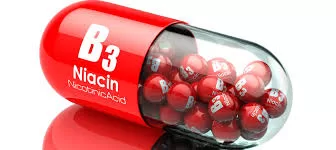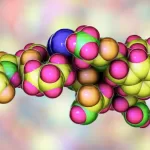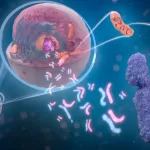Researchers Unveil Insights into Niacin’s Side Effects and Potential for Safer Cholesterol Management
Introduction: Researchers at the Indian Institute of Technology (IIT) Kanpur have uncovered the intricate molecular mechanisms underlying the action of cholesterol-lowering drugs, particularly Niacin. Their groundbreaking study, detailed in the journal Nature Communications, sheds light on how Niacin works at a molecular level and provides crucial insights into its side effects and potential for safer cholesterol management.
Understanding Niacin’s Action: Niacin, renowned for its ability to elevate levels of “good” cholesterol (HDL) while reducing “bad” cholesterol (LDL), has long been a staple in cholesterol management. However, its efficacy is often marred by side effects such as skin redness and itching, known as flushing response. Professor Arun K. Shukla of IIT Kanpur’s Department of Biological Sciences and Bioengineering elucidated, “Niacin’s flushing response poses challenges for patients, leading many to discontinue treatment despite its cholesterol-lowering benefits.”
Insights from Cryo-EM Technology: To unravel the mysteries surrounding Niacin’s side effects, the research team leveraged cutting-edge cryogenic-electron microscopy (cryo-EM) technology. Through this advanced technique, they visualized the key receptor molecule Hydroxycarboxylic acid receptor 2 (HCA2), also known as the niacin receptor or GPR109A, which Niacin activates. This receptor plays a pivotal role in regulating fat-related processes and arterial health.
Understanding the Flushing Response: The study elucidated how Niacin, upon activation of the HCA2 receptor, triggers the widening of blood vessels, resulting in the characteristic flushing reaction observed in some patients. This groundbreaking insight into the molecular basis of Niacin’s side effects paves the way for the development of novel cholesterol-lowering drugs with improved tolerability profiles.
Implications for Drug Development: Prof. Shukla emphasized the transformative potential of their findings in drug development. “By visualizing the interaction between GPR109A and Niacin at the molecular level, we lay the foundation for the design of next-generation cholesterol-lowering medications that maintain efficacy while mitigating undesirable reactions,” he stated. Furthermore, the study’s insights hold promise for the development of therapeutics for various conditions beyond cholesterol management, including multiple sclerosis.
Conclusion: The groundbreaking study by IIT Kanpur researchers marks a significant step forward in understanding the molecular intricacies of cholesterol-lowering drugs like Niacin. By unraveling the mechanisms underlying Niacin’s side effects, the research opens new avenues for the development of safer and more effective treatments for cholesterol management and related conditions.












